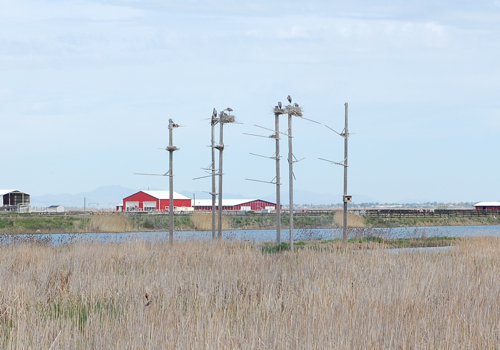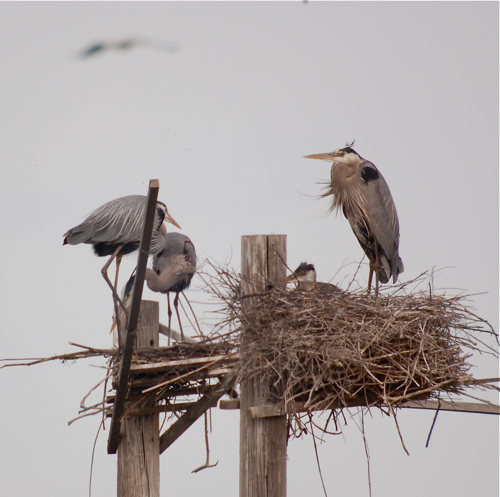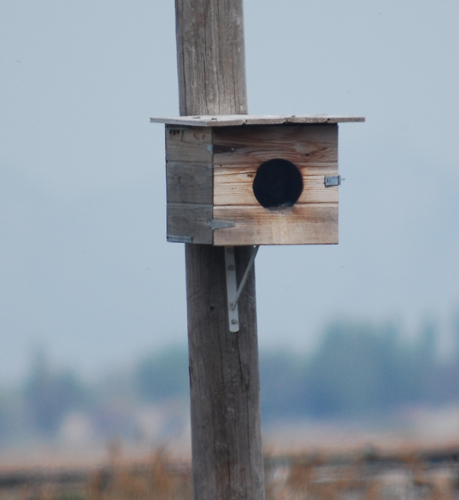Not long after the North Mississipppi heron rookery was destroyed, there was talk of building an artificial rookery to get them to come back. Now that the herons seemed to have settled on other islands, the situation isn't as dire--they found plenty other nesting opportunities. However, if an area is missing good nesting sites for herons, it is possible to create it. Here's an example of one in Utah at Farmington Bay WMA in Utah (thanks to Facebook, I have to work really hard not to calling Farmville WMA):

Heron nesting sites can disappear for a variety of reasons. Accumulation of heron fecal material can kill off vegetation or even the trees the birds use for nesting. I think the trees and vegetation on the river islands stay in tact because of annual flooding, the river rises and the waters swamp this island washing a lot of the collected poop away. But I've been to other areas that aren't prone to flooding and gradually, the vegetation dies. After several seasons, storms or general wear and tear can cause the dead trees to fall. Or maybe there aren't any trees there to begin with.

If nesting trees aren't available and the number of herons decreases then fake trees can be added. Woodworking for Wildlife offers plans and info on how to build them and I've been to at least 2 places (this year alone) where fake rookeries have been readily used by herons. Now, you can't just put up some poles at a pond and expect herons to use it. Before you put it up or before you put up any bird house habitat try to think about the species you are trying to attract. Herons usually forage less then four miles from their nest, so you need to make sure there are lots and lots food sources nearby. If the food isn't there it won't be successful. Kind of like putting up a bluebird box in the middle of the woods, that's not their habitat.

I was out with a digiscoping tour while visiting the artificial rookery and people in the group noted this box attached to one of the poles. At first, it threw me for a loop. I tried to think of all the bird boxes we carried at the bird store or that I'd seen around MN and couldn't figure it out. I noticed some movement, put the scope on it and discovered barn owls inside. No wonder, we don't have barn owls in Minnesota so I would be familiar with this sort of nesting box. Alas, I wasn't able to digiscope them but it was cool to see it in use. It makes sense, I've seen herons nest with red-tails and I'm sure a barn owl isn't much of a threat with their tiny feed.
